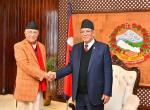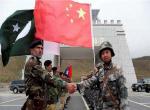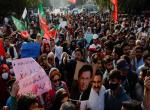Introduction
Just days after Barack Obama announced fresh stipulations on the use of drones, a US drone strike on May 29 killed the Tehreek-e-Taliban Pakistan (TTP) deputy chief Waliur Rehman. The TTP confirmed his death the next day, declared that they were withdrawing from peace talks with the incoming Nawaz Sharif-led Pakistani government and would extract "revenge in the strongest way". On 31 May, an assault by approximately 100 militants on a security post in Mamuzai, Orakzai agency in FATA, left three Pakistani soldiers and 20 militants dead. It is believed that the attack was in response to the death of Waliur Rehman.
The US drone strike on 29 May was the first inside Pakistan since 17 April this year and the first since Pakistanis voted overwhelmingly on 11 May for political parties, which amongst other issues, strongly opposed the US use of drones in Pakistan in their manifestoes. The Pakistani government condemned the drone strike, saying that it violated Pakistani sovereignty. Analysts are divided as to how and how much this drone strike would complicate the early days of Nawaz Sharif, who had just begun to make overtures for peace with the TTP.
The Strike
The drone strike reportedly occurred in the village of Chashma, some three kilometers from Miran Shah, the district headquarters of Pakistan's North Waziristan agency, an area dominated by the Haqqani Network. The US drone fired four missiles at a mud-built guesthouse in the Chashma area, in the early hours of May 29, killing all those inside. Apart from Waliur Rehman and his deputy Fakhar-ul-Islam, there were two Uzbek militants amongst the seven people killed.1 The attack was quite similar to the one on Mullah Nazir, taking out the top rung of the leadership of the faction.
Waliur Rehman
Waliur Rehman Mehsud was a member of Malkhel tribe, a sub-clan of the Mehsuds inhabiting the Sarokai Manzai area of South Waziristan. He joined the Haqqani network2 and, according to US State Department,was its chief military strategist3. Rehman was also reported to be a former member of Jamiat Ulema-e-Islam-Fazlur (JUI-F). When the TTP was founded in 2008, he joined the group and became the spokesperson of its chief, Baitullah Mehsud. After the death of Baitullah Mehsud in a US drone strike in 2009, Hakimullah Mehsud was anointed Baitullah’s successor, while Waliur Rehman was assigned the group’s command in South Waziristan. It is believed that this caused a rift between Hakimullah and Waliur Rehman, which persisted till the end.
Rehman, while serving as principal deputy to Hakimullah, also managed the TTP's finances4. In 2009, when the security forces launched an operation in South Waziristan, causing most TTP militants to move out of the region – but Waliur Rehman preferred to remain in the Wana sub-division, where the Mullah Nazir group was in control. Rehman and his fighters shifted to North Waziristan after the suicide attack on Mullah Nazir on November 29, 2012. Besides orchestrating multiple terror attacks inside Pakistan and in neighboring Afghanistan, including the suicide attack at Combat Outpost Chapman that killed seven CIA personnel, Rehman was also linked to the failed Times Square car bombing in New York City.
Rehman was also a key TTP negotiator in the 'peace talks' with the Pakistan government and was considered amenable to the views of the military establishment which was pushing for ceasefire in return for holding back any possible direct military action. He was against attacking Pakistan and its security forces and was keen on a negotiated ceasefire settlement which suited both the Haqqanis and the Afghan Taliban as it allowed the TTP the option of participating in the spring offensive in Afghanistan this year. A report published by The News indicated that U.S. officials warned Pakistan government and military leaders against entering into peace negotiations with the TTP. Washington felt that the peace negotiations were motivated by Mullah Omar to secure TTP support for the spring offensive in Afghanistan.
Assessment
It is felt that Rehman’s death could, one, weaken and fractionalize the TTP; two, put the peace talks in limbo and cause the TTP to focus on Pakistan; three, with peace talks not forthcoming, the increased TTP attacks would cause the Pakistani army to launch an offensive in areas dominated by the TTP.
Rehman's death could prove to be a serious setback for TTP as he was not only the group's principal military strategist and primary fund raiser but also a key interlocutor between the group and the Pakistan government. With his death, Mehsud will now be able to extend greater control over the TTP and the new Pakistani government would find TTP less amenable to peace. The TTP instead may launch fresh attacks across Pakistan to avenge Rehman's killing, which would create new pressures on the Pakistani government. With Hakimullah refusing to give up targeting Pakistan, the army would be forced to, once again, take a call on launching a military offensive against TTP in North Waziristan.
The killing is also expected to trigger one or multiple splintering in the group, weakening its capabilities. It was, therefore, not surprising that the US State Department soon announced that Rehman was targeted on a tip-off provided by a member of the Hakimullah Mehsud-led group and the US will award the informer with $5 million. 5 In 2010, the US had declared Rehman a "specially designated global terrorist" and offered a $5m reward for information leading to his arrest. Meanwhile, six Taliban commanders allied with Rehman unilaterally declared Khan Said (Syed) as Rehman's successor; a move analysts view as an indication of dissent.
The strike may also have an impact on Pakistan's relations with the US as the PML-N has said it plans to renegotiate all agreements with the U.S., including secret ones signed by previous governments. The anti-drone chorus is likely to grow as the incoming Pakistani government campaigned on promises to negotiate with the TTP and oppose U.S. drone strikes.
While there is no denying the US desire to see Rehman dead, the question remains on the timing of the strike; coincidence or a strategic move? Two days after Waliur Rehman was killed, James Dobbins, U.S. special representative to Afghanistan and Pakistan, visited the Pakistani Army chief General Kayani, as well as Foreign Secretary Syed Jalil Abbas Jailani. According to the U.S. Embassy in Islamabad, Dobbins discussed Pakistan’s recent elections and the U.S.'s 2014 troop withdrawal from Afghanistan. 6
Two issues figure prominently on the US agenda for AfPak; conclusion of a successful security transition in Afghanistan and the ongoing drawdown, which will pick up pace in 2014. From the point of view of the security transition US will want, one, TTP to stay out of Afghanistan; two, if TTP chooses to continue attacks in Pakistan, all the better, it will cause the military to respond. With Pakistan employing its air force to support the army ground action, military intervention in FATA and Waziristan could significantly impact the capability of the TTP. Three, there should be no peace deal. US does not want some cozy bargain to be struck where the Pakistan based militants ease off inside Pakistan while Pakistan turns a blind eye to their activities in Afghanistan.
Regarding the drawdown of ISAF/NATO equipment through Pakistan, US would like both Torkham and Chaman to be operational and route right down till Karachi/Port Qasim secure. The initial movement through Chaman last month was attacked despite the route being secured by the Frontier Corps. The recent rise in Taliban activity in Karachi too does not bode well. Pakistani military action in North Waziristan and Khyber agency would help in quelling militant activities and facilitate drawdown.
Conclusion
In Lahore, James Dobbins also met Nawaz Sharif, who, according to reports, indicated that Pakistani support for the U.S.'s exit strategy in Afghanistan could hinge upon American cooperation on drone strikes within Pakistani territory.7 Events in the days ahead would reveal whether killing of Waliur Rehman was a US masterstroke or just blessed relief for Pakistan even if it was brought about by the much hated drone.
(The author is a Defence Analyst based in Delhi)
Endnotes
- ‘Big blow: TTP loses deputy chief in drone hit’, The Express Tribune, May 30, 2013.
http://tribune.com.pk/story/556387/big-blow-ttp-loses-deputy-chief-in-drone-hit/ - ‘Waliur Rehman: From madrassa teacher to Taliban commander’, The Express Tribune, May 30, 2013. http://tribune.com.pk/story/556397/profile-from-madrassa-teacher-to-taliban-commander/
- ‘Wali Ur Rehman’, U.S. Department of State Rewards for Justice flier. http://www.state.gov/documents/organization/146936.pdf
- Mansur Khan Mehsud. ’The New Face of the Pakistani Taliban?’, ForeignPolicy, April 30, 2010. http://afpak.foreignpolicy.com/posts/2010/04/30/the_new_new_face_of_the_pakistani_taliban
- ‘Wali killed on a tip-off by Hakimullah supporter’, The Express Tribune, June 2, 2013.
http://tribune.com.pk/story/557769/wali-killed-on-a-tip-off-by-hakimullah-supporter/ - Muhammad Saleh Zaafir. ‘US AfPak envoy on a fact-finding mission’, The News, May 31, 2013. http://www.thenews.com.pk/Todays-News-13-23203-US-AfPak-envoy-on-a-fact-finding-mission
- Kamran Yousaf. ‘New envoy: Drones impede Pakistan’s role in Afghan peace, says Nawaz’, The Express Tribune, May 31, 2013. http://tribune.com.pk/story/556905/new-envoy-drones-impede-pakistans-role-in-afghan-peace-says-nawaz/
Published Date: 20th June 2013, Image Source: http://www.topnews.in/files/Taliban-militants101.jpg








Post new comment